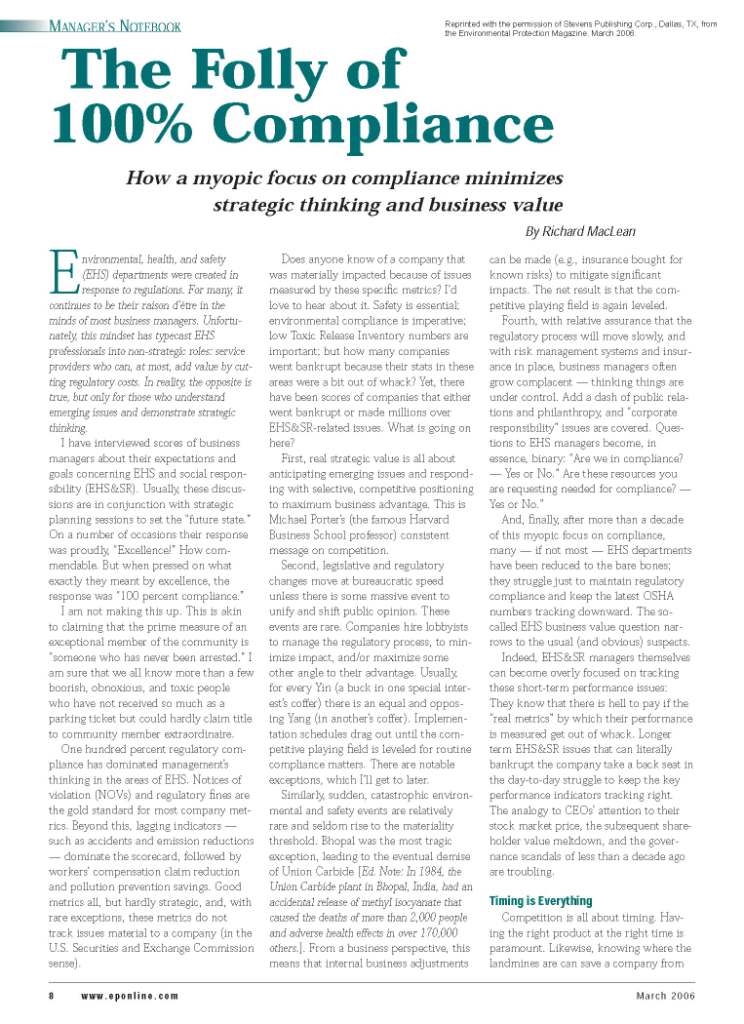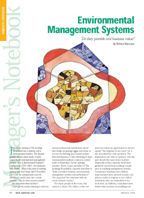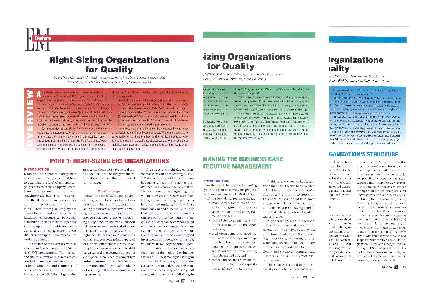|
This section contains abstracts for various articles Mr. MacLean has published. To be notified of new articles as they become available, please join our email list.

|
Can Anyone Be an Environmental Manager? - The tragedy of our "profession," Environmental Quality Management, Winter 2010.
This column explores the current condition of the EHS profession - and raises a number of troubling questions that have yet to be openly addressed within our professional ranks. The problem was summed up in a headline I saw recently saying, "The EHS profession has skidded down the food chain." In the jargon of marketing, the environmental profession has no identifiable brand and barrier for entry. Anyone can be appointed the organization's "Environmental Manager."
Can we really call EHS management a "profession" in the same way that law, medicine, engineering, and nursing clearly are professions? We may consider ourselves genuine professionals and respect those individuals who pass muster with our list of certifying organizations. In the grand scheme of things, however, the way "pocket protector guys" are treated within organizations reflects little acknowledgment of what it takes to do a truly professional job. There is something fundamentally wrong with the environmental profession and how it is valued - or not valued - by the public, governments, and business management. |
 |
|
The Folly of 100% Compliance - How a myopic focus on compliance minimizes strategic thinking and business value, Environmental Protection, March 2006.
Environmental, health and safety departments were created in response to regulations. For most, it continues to be their raison d'être in the minds of most business managers. Unfortunately, this headset has typecast EHS professionals into non-strategic roles: service providers who can, at most, add value by cutting regulatory costs. In reality, the opposite is true, but only for those who understand emerging issues and demonstrate strategic thinking.
|
 |
|
Corporate Environmentalism: In search of vision, leadership, and strategy, Environmental Quality Management, Autumn 2005
Environmental managers are in transition between a regulatory-driven past and new environmental dynamics. The future will be driven by stakeholder demands for the responsible use of natural and human capital. Understanding this transition and its business implications requires an examination of how we got to the current state, a brutally honest evaluation of where we are today, and re-examination of how environmental departments can add value in the future. Seven essential steps will be necessary to successfully navigate this transition. |
 |
| Environmental Management Systems, A controversial three part series appearing in Environmental Protection, February, March, September 2004.
Part 1 raises the question, “ Do they provide real business value?” Yes, an EMS can provide tremendous real business value, but only if it is focused on key business processes. Part 2 explains how to get the most from your Environmental Management System. Part 3 provides reader feedback on the first two articles. |
 |
| Sustainable Careers, A four part series on the future of environmental, health and safety professionals. Appearing in the January/February, April, and September 2003 and January 2004 issues of Environmental Protection Magazine.Part 1 examines the need to take direct responsibility for one's future job security. Part 2 examines the major trends that may dead-end some careers and raise others to new heights. Part 3 describes how to better position yourself in an EHS job market that is undergoing an extraordinary transformation. |
 |
| Green Arthritis, Cover story Co-authored with Frank Friedman, The Environmental Forum, Environmental Law Institute, Washington, DC, November/December 2000.Develops the concept of "Green Arthritis" infecting environmental progress in the United States. Europe is now taking the lead in developing new, innovative concepts that ultimately will impact America's competitive position. "Environmental progress has become ossified, as the major actors replay the battles of the past: Environmentalists persist in seeing old problems as continuing crises. Regulators still triumphantly announce new enforcement actions. And industry touts sustainable development while continuing mostly to seek simple compliance. Meanwhile, perplexed citizens recycle newspapers in the hopes that they are offsetting the pollution effects of their sport utility vehicles." |
 |
| Leading Successful E, H & S Organizations -- Recommendations for EHS Executives, Co-authored with Dorothy Bowers, Vice President, Environmental and Safety Policy at Merck & Company and William Sugar, Senior Director, Anheuser - Busch Companies, Corporate Environmental Strategy, 1998. One reviewer states: "[The] article by MacLean, Bowers, and Sugar gives a virtual blueprint for what makes an EHS executive successful. Where else could an article of this significance be published? Perhaps in the Harvard Business Review, but after that the list drops off dramatically." |
|
Right-Sizing Organizations for Quality, Three-part Series Appearing in EM, The Magazine of the Air & Waste Management Association.
 Part 1, Right-Sizing EHS Organizations, Co-authored with Rick Monty, Director of EHS for Huntsman Chemical, May 1999 Part 1, Right-Sizing EHS Organizations, Co-authored with Rick Monty, Director of EHS for Huntsman Chemical, May 1999
Part 2, Optimizing the Organization's Structure, Co-authored with Rick Monty, Director of EHS for Huntsman Chemical and Kyle Dotson, Vice President EHS, BHP Non-Ferris and Industrial Materials, June 1999
Part 3, Making the Business Case to Executive management, Co-authored with Rick Monty, Director of EHS for Huntsman Chemical, July 1999
|
|


 Join Our Email List
Join Our Email List






